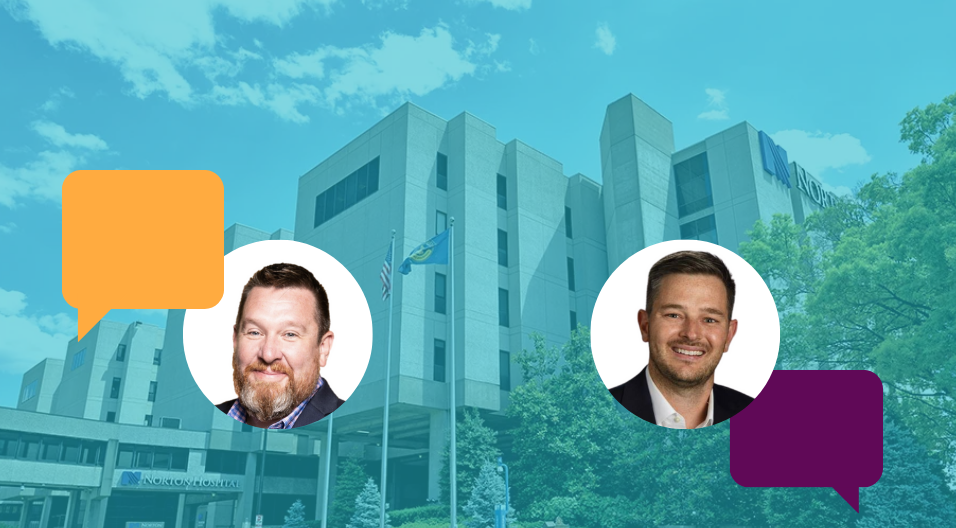By Joy Avery, MSN, RN
According to the National Library of Medicine, the top reason for staff burnout in the healthcare industry is “too many bureaucratic tasks.” For each hour of clinical face time that providers spend with patients, an additional two are consumed by administrative work. Chief among those tasks is conducting post-discharge patient outreach, when staff can spend hours trying to reach patients only to scribble down notes with pen and paper from those they do reach, which then need to be entered into patients’ records. (The third cause of staff burnout per the National Library of Medicine? “Increasing computerization of practice.”)
Post-discharge patient outreach is critical to reducing readmissions. In fact, a CipherHealth study found that patients reached post-discharge were readmitted 56 percent less often than those who were not reached. But with an average of 24 percent of providers’ working hours spent on administrative duties, how can health systems reduce readmissions without overtaxing their staff with repetitive tasks?
Enter healthcare automation. Specifically, automated population- and condition-specific post-discharge patient outreach in which patients are sent personalized clinical questions via SMS or Voice, in which patients confirm whether they are feeling better or worse. If they are feeling worse, staff is automatically alerted and can reach out. Otherwise, staff can safely continue to care for the patients in front of them. This process automation can free several hours a week for each healthcare worker to focus on providing patient care to those who need it most.
5 Benefits of Automating Post-Discharge Outreach
Allow Staff to Practice at the Top of their License.
When staff make manual patient followup calls, it can take 3 to 5 attempts just to get in touch with the patient – all patients – and can spend an average of 15 minutes per call. Indeed, a leading comprehensive care network with hundreds of healthcare facilities around the country utilized an estimated 22,041 nursing hours for their manual outreach program. This is time spent that could be used for healthcare provider staff to practice at the top of their license instead. With automated post-discharge patient outreach, instead of making 100 percent of those calls, staff can now focus on the patients who need actual help, following up with the 20 to 25 percent of those post-discharge patients that ‘raise their hand’. And in instances where there are readmissions, staff are available to focus on those readmits.
Increase Staff Satisfaction.
According to Academic Medicine, providers who reported higher percentages of time spent on administrative duties and other repetitive tasks had lower levels of career satisfaction and higher levels of staff burnout. Providing staff with effective technological tools and creating workflows and structures like automated post-discharge patient outreach fosters communication, teamwork and efficiency. Indeed, nurse satisfaction at the leading comprehensive care network increased by 40 percent after automated post-discharge patient outreach was implemented.
Reallocate or Reduce FTEs.
Automated post-discharge patient outreach means that the administrative burden on staff can be greatly reduced. Supposing staff are making 60,000 manual calls annually for inpatient post discharges at an average of 15 minutes each (research, dialing, talk and documentation time), that amounts to ~7 FTEs. By automating those calls, and only requiring staff to follow up with those 20 to 25 percent of patients who need medical attention, hospitals can take away 80 percent of that work, saving time and resources. Some hospitals have done even better, with 92 percent labor reduction.
Replace Pen and Paper with Intelligent Automation.
With manual post-discharge patient follow-up, staff have traditionally been tasked with taking notes from those calls by hand, then entering patient data into a digital record. Not only is this time-consuming, it can be frustrating and overwhelming. Automated post-discharge patient outreach automatically tracks patient responses in a digital system of record, taking the burden off staff to manually upload patient data and making the data reliable and clear.
Make it Easier for Leaders and Staff to Leverage Patient Data.
When automated post-discharge patient outreach responses and corresponding follow-ups are tracked in a single source of digital record, hospitals are able to get a more comprehensive view of the patient experience – and, importantly, staff have the ability to track and trend data regarding post-discharge patient concerns and take proactive measures to address and reduce them. In the case of the leading comprehensive care network, once the automated workflow of post-discharge patient outreach was implemented, staff were 40 percent more likely to indicate that their hospital has a clear follow-up process with discharged patients.
Conclusion
Perhaps one of the scariest impacts of increased administrative burden on healthcare organization staff is that those experiencing excessive administrative duties are more likely to consider seeing fewer patients in the future. With an overburdened health system and staff shortages, we cannot afford that reality. The benefits of automation in healthcare institutions are vast, but no more so than when it comes to interacting with patients in an automated way that targets their specific care plans – and allows healthcare professional staff to be their best at their jobs.








